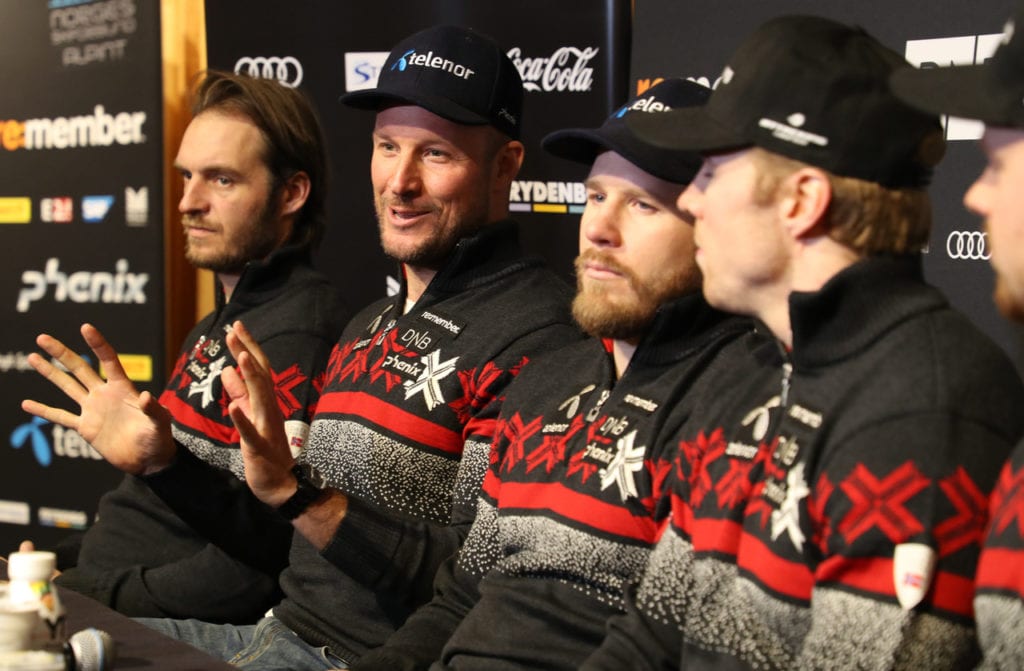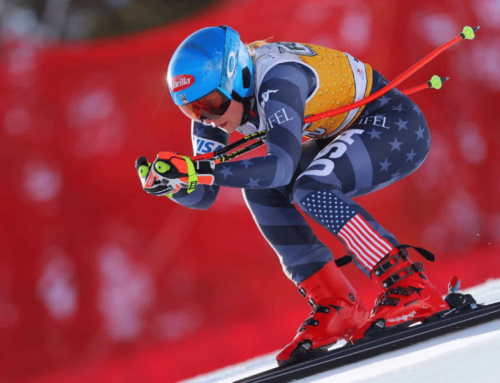Svindal interview sheds light on the Attacking Viking’s ‘secret sauce’
Culture is hard to put a finger on, at least to crystallize what it is and how it can be replicated. The cultural differences between all ski nations is a particularly interesting and complex mix of variables and intangibles, such as coaching styles, philosophies, work ethic and sport development centralization, to mention a few.
When former Canadian World Cup slalom racer Mike Janyk interviewed Aksel Lund Svindal on a FaceBook live session Sunday as part of BC Alpine’s summit speaker series, he covered a lot of ground with the thoughtful and ever-smiling Norwegian great, who should be in the conversation as the men’s alpine GOAT.

The mentorship piece is one that stands out as a key ingredient in the Attacking Vikings ‘secret sauce’ which they have relentlessly deployed over the past few decades winning titles and medals at a rapid and relentless rate. When one champion fades, another enters. Over and over again. Lucas Braathen, the latest Norweigan-we’ve-never-heard-of-until-he-wins took the Solden opener … as a 19-year-old. Side note: three Norwegians were in the top 8 in that race.
Norway’s key to success? In a word: mentorship
Svindal was one of the most likeable athletes on the tour, with an attitude that every ski racer and parent should study and dissect to fully understand what it looks like to be a genuine champion. During his prolific career, which garnered two overall World Cup titles and 36 wins, he showed respect to his predecessors, challenged the present and nurtured the future. Then passed the torch to the next leader in waiting.
When Svindal first joined the Norwegian team in 2001 as a 19-year-old, he joined Lasse Kjus and Kjetil André Aamodt, ski racing legends in the tail end of their historic careers whose combined record of 160 major World Cup, World Championship and Olympic medals is firmly entrenched in the record books.
“I had posters of these guys on the wall still … and I’m sitting around the dinner table the first night in Saas Fee,” he reminisced. “They were still my heroes and now they’re my friends? It was one of the coolest moments of my career. My first year on the World Cup team was probably the highlight of everything I was able to be a part of.”
The Norge’s take their approach to team building and mentorship seriously.

Svindal took what he learned from Kjus and Aamodt and simply passed on their legacy. “It was something I thought was the most valuable; that I could pass on to the young guys on our team when I was the captain. If they sit down at the first meal I want them to know they made the cut and are part of the team because they earned it.”
Aleksander Aamodt Kilde, who grew up idolizing Svindal, burst onto World Cup in 2016 to win the overall super G title that year. When Kilde first qualified for the Norwegian national team as a junior, Svindal took the talented teenager under his wing, showing him the ropes and helping with his transition to World Cup racing.
Kilde won the overall World Cup title in 2020.
Managing fear, harnessing risk
When Svindal first entered the ultimate fear-overcoming environment of the Hahnenkahm downhill start area before his first training run at the legendary Kitzbuhel race, he walked over to Swiss star Didier Cuche, who at the time had already won the race four times, and was promptly told to go away, as Cuche needed to collect his own thoughts and manage his fears.
“That was the atmosphere of the guys who are going to fight for the win, they know it’s going to be a risk and when faced with the choice they’re going to take it. Then there are those guys joking around and throwing snowballs, they also know it’s a risk but they’re going to back out when it get’s tough and they will take the safe line.”
By the middle of the 2010s, Svindal had been dominating the speed circuit for years before a horrific crash at the 2016 Hahnenkamm downhill sidelined him with a shredded knee. The recovery from that injury was slow and required a second surgery midway through the following season. Eventually, Svindal did bounce back from his injury and won three World Cups the next season, including the Kitzbuehel super G.
Life in the fast lane continues for Svindal
Anyone who’d followed Svindal’s career knew that he would have no interest in fading into some oblivious retirement. Already with one foot in the entrepreneurial business space during his latter part of his ski racing career, he recently helped launch an IPO with a tech company, in addition to real estate investments, launching a fashion brand and a book and movie on the horizon.
“I’ve always been interested in other stuff it’s tough to leave your teammates but you find awesome energy in other places,” he said. “People are super competitive in other spaces so it’s kind of similar to being an athlete. I’ve been a part of some awesome groups. One startup I joined as an investor four-and-a-half years ago just launched an IPO on Friday, so to see them grow from 8 guys to a hundred plus employees was really cool.”
“And they have that same culture as you have with a small group of guys.”
There’s that word again, culture.
Watch out business world.
Sidebar: Svindal, the GOAT?
- He became the oldest skier at 35 to win an Olympic gold medal (2018 Pyeongchang downhill). Also became the first Norwegian ever to win gold in the Olympic men’s downhill (after they had previously won four silver medals).
- The only man to have won three major global downhill titles – World Championships in 2007 and 2013 and Olympics in 2018.
- He’s won World Cup races in 12 different seasons. Only Sweden’s Ingemar Stenmark, 13, has won in more.
- World Cup titles: 11 Overall (2), downhill (2), super G (5), giant slalom (1) and combined (1)
- World Cup wins: 36 – Downhill (14), super-G (17), giant slalom (4) and combined (1)
- Most successful venues: Lake Louise – 8 World Cup victories (2 downhill, 6 super-G) Val Gardena – 7 (2 downhill, 5 super G) and Beaver Creek – 6 (4 downhill, 1 combined, 1 super G)





















